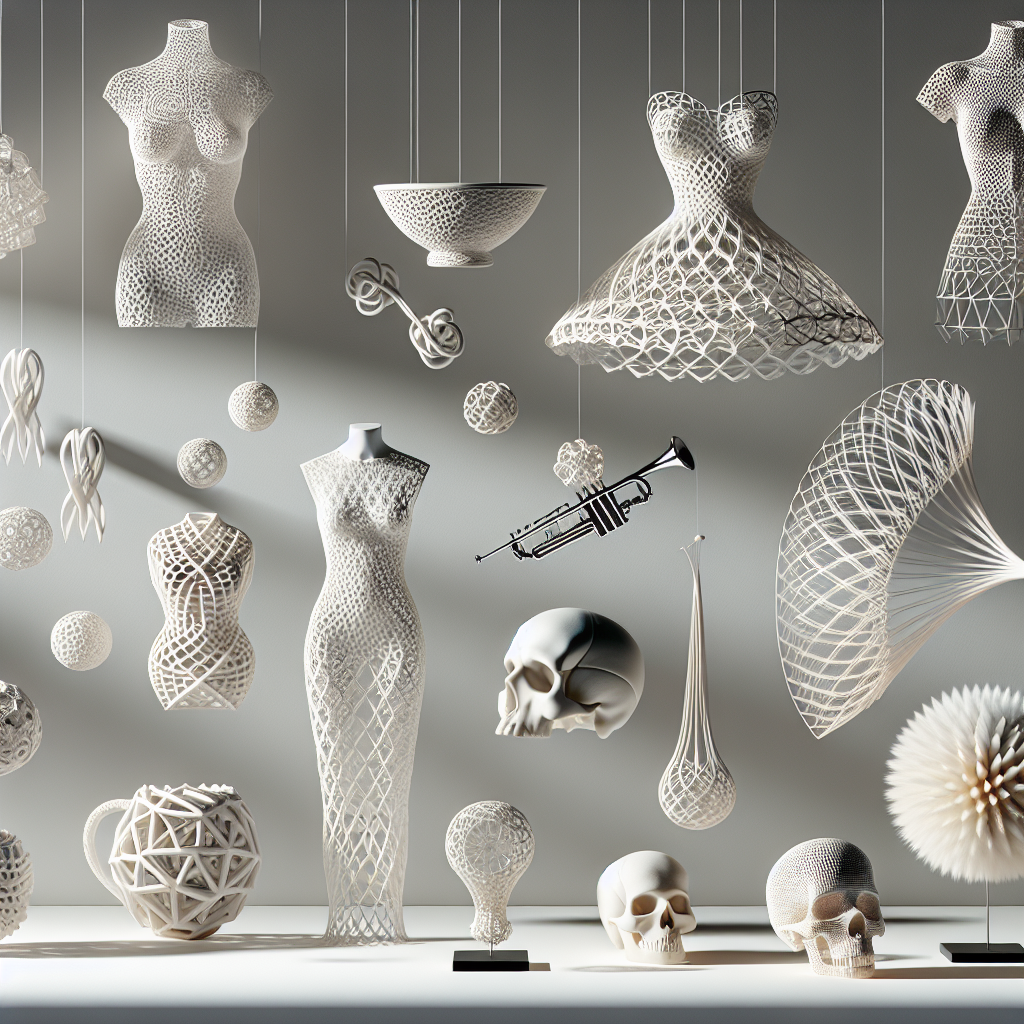The Most Unusual and Bizarre 3D Printed Objects
3D Printing: Pushing the Boundaries of Imagination
When 3D printing first made headlines, the focus was largely on prototyping, rapid manufacturing, and practical gadgets. But as the technology became more accessible, creative minds around the globe began to experiment. The results? Some of the most unusual and downright bizarre objects ever produced. Drawing from years of experience in the 3D printing industry, let’s take a wild ride through some of the strangest creations ever to emerge from a printer nozzle.
Edible Objects: 3D Printed Food and Sugar Sculptures
Perhaps nothing is more unexpected than machines printing food. Yet, 3D food printers have churned out complex sugar sculptures, chocolate masterpieces, and even pizza. Companies like Sugar Lab have printed ornate lattice cakes and edible centerpieces. NASA has even funded research into 3D printed space food, so astronauts could one day customize their meals on Mars!
Fashion That Defies Logic
3D printed fashion often looks more sci-fi than sidewalk. Designers such as Iris van Herpen have used 3D printing to create dresses that seem to float around the body, made from intricate, interlocking geometries impossible to sew by hand. There are even 3D printed shoes with heels that look like alien sculptures and hats that would make Lady Gaga blush.
The 3D Printed Acoustic ‘Death Whistle’
One of the strangest objects I’ve ever seen come off a printer is the Aztec death whistle. Resembling a simple skull-shaped artifact, this whistle emits a blood-curdling scream when blown. Makers have reverse-engineered ancient designs using 3D printers, allowing anyone to recreate the terrifying sound once used in rituals and warfare.
Unusual Musical Instruments
Who would have thought you could play a saxophone or violin printed entirely from plastic? Makers have pushed the limits of acoustic engineering, producing playable 3D printed instruments. Even more bizarre are hybrid designs: the “Hornucopian Dronepipe,” for example, is a massive, spiraling wind instrument impossible to craft by traditional means.
3D Printed Organs and Body Parts
Bioprinting is where science fiction enters reality. Researchers have printed human ears, tracheas, and even functional tissue slices. While fully functional organs are still in development, the sight of a lifelike ear or a custom prosthetic limb made from a digital file is both awe-inspiring and a little uncanny.
Home Décor: Bizarre Lamps and Furniture
The design freedom of 3D printing has given rise to strange furniture and home accents. Think chairs that look like tangled roots, tables that defy geometry, or lampshades resembling coral reefs. There’s even a 3D printed “Eggshell Pavilion” — a walk-in structure made entirely out of recycled eggshells and biodegradable plastic.
Art That Challenges Perception
Some artists use 3D printing to materialize the impossible. One notable example is Joshua Harker’s intricate “Crania Anatomica Filigre,” a delicate, lacy skull that became an icon of 3D printed art. Others print optical illusions or interactive sculptures that change shape when manipulated.
Medical Marvels: 3D Printed Faces and Implants
In the realm of reconstructive surgery, 3D printing has delivered prosthetic faces tailored to individual patients. There are stories of people receiving 3D printed titanium jawbones and skull plates. Each object is as unique as the patient, and the results are both practical and, to the untrained eye, quite surreal.
The Most Unexpected: A 3D Printed House
Finally, perhaps the largest and most absurdly ambitious 3D printed object is an entire house. Construction-grade printers have produced walls, roofs, and even bridges, using concrete extruded layer by layer. The idea of machines “printing” our future dwellings directly from digital plans was once pure fantasy; today, it’s a reality.
Conclusion: The Weird is Just Beginning
As materials and printer technology advance, the boundary between the practical and the peculiar will continue to blur. What seems bizarre today could become commonplace tomorrow. 3D printing is fundamentally a tool for turning imagination into reality — and some imaginations are wilder than others.

Leave a Reply